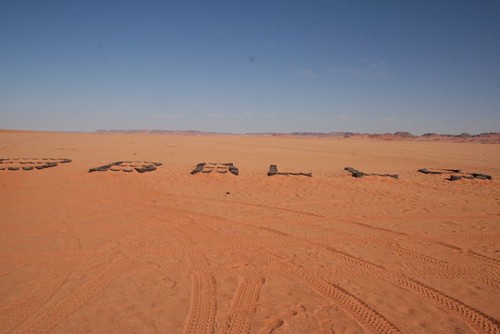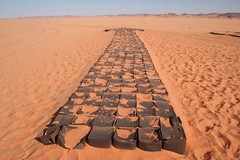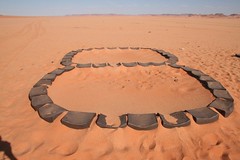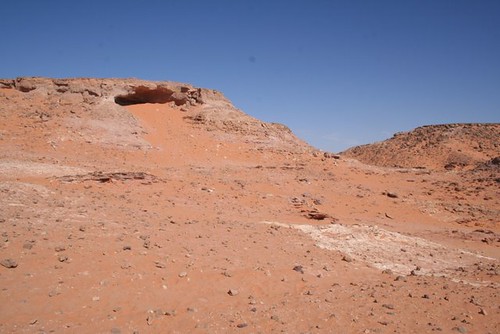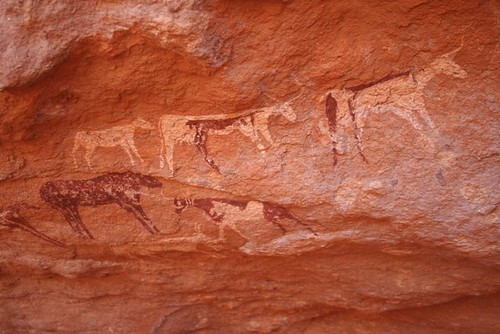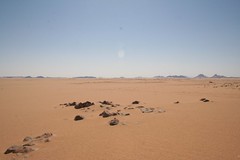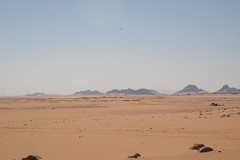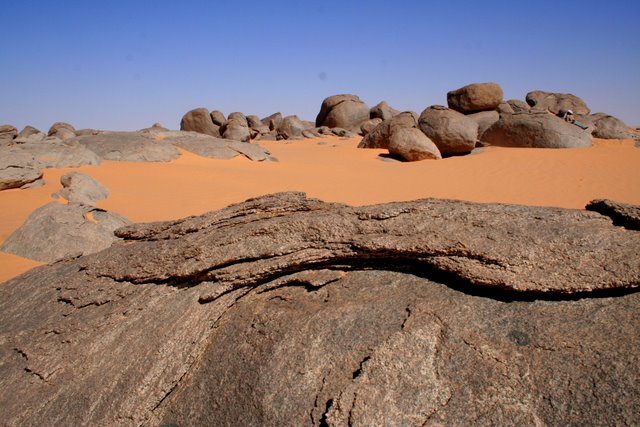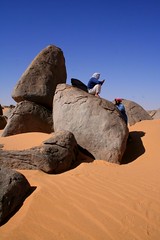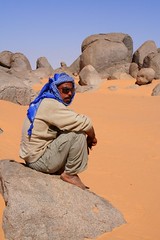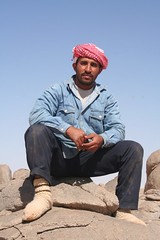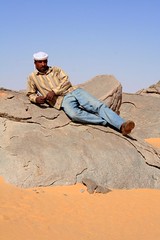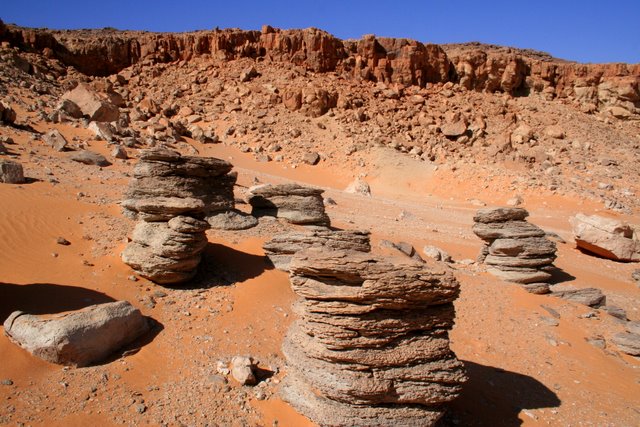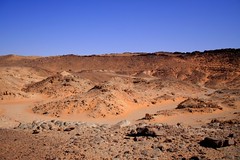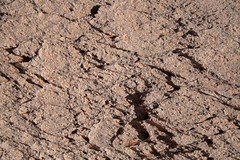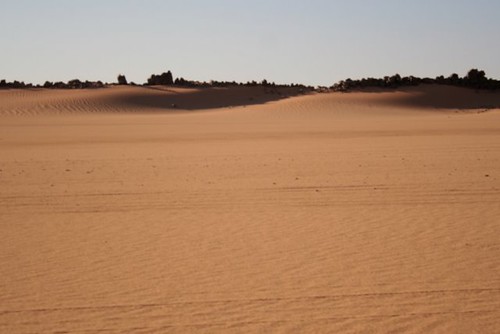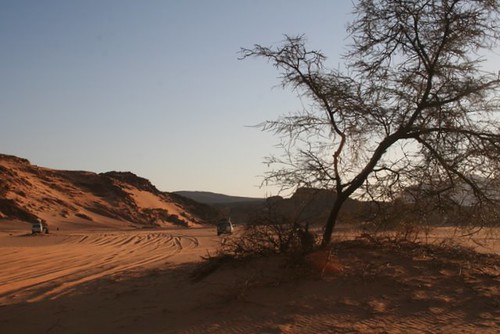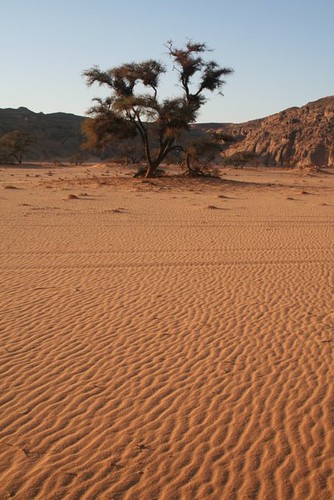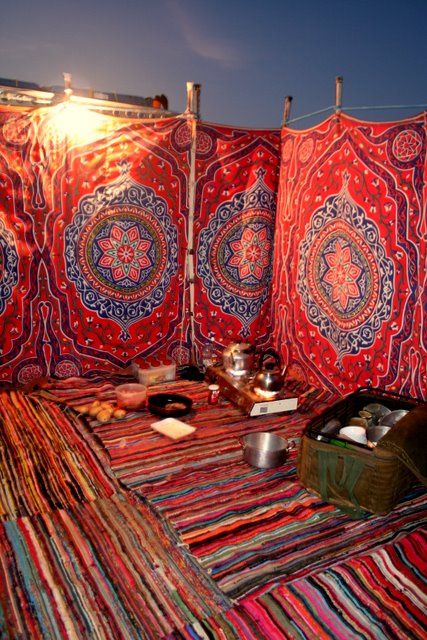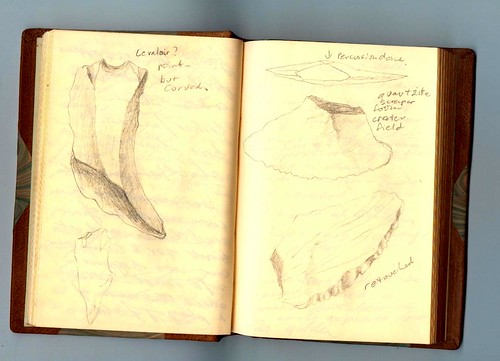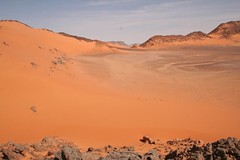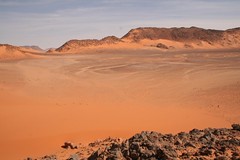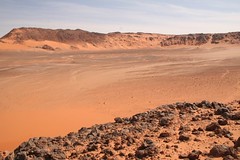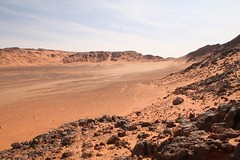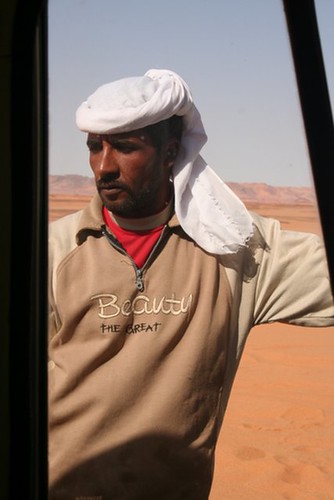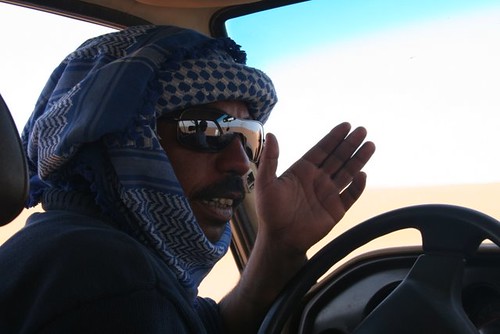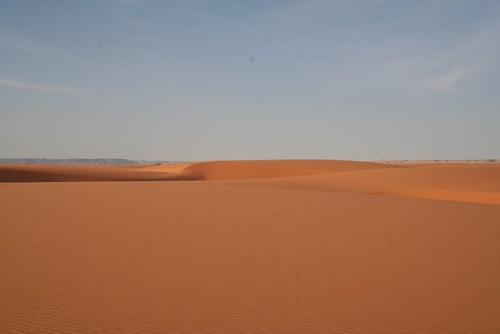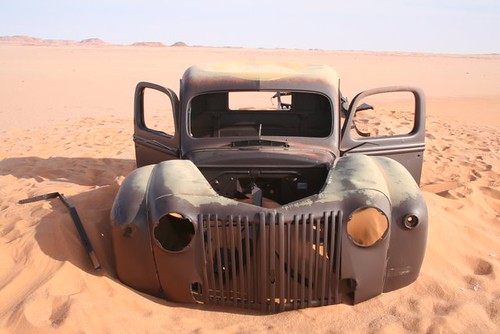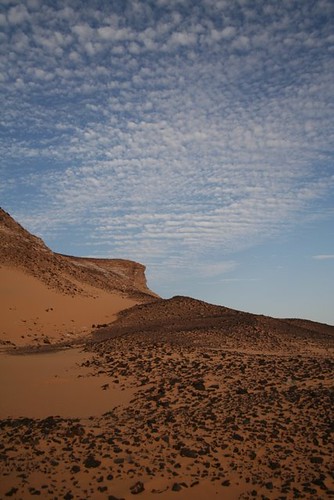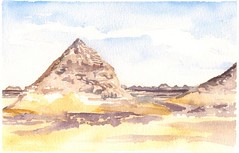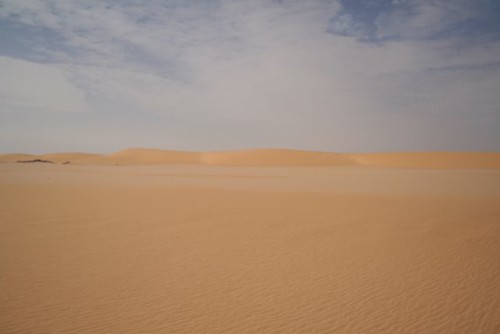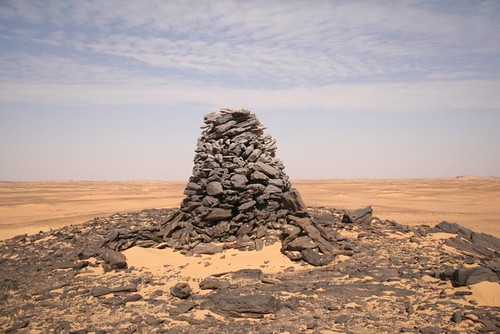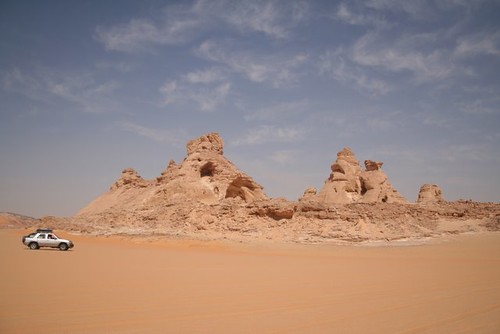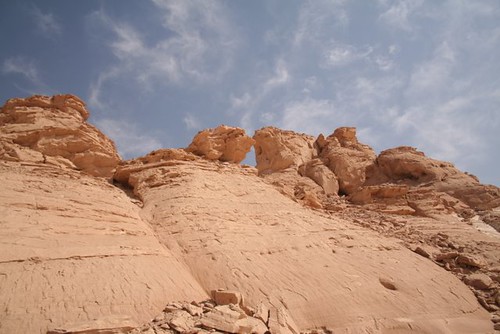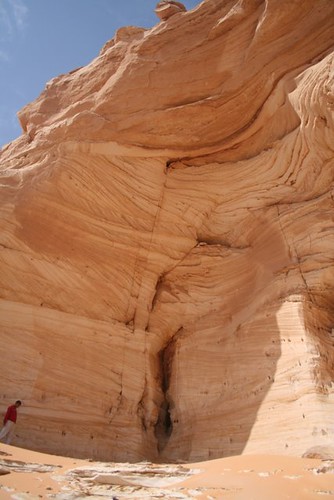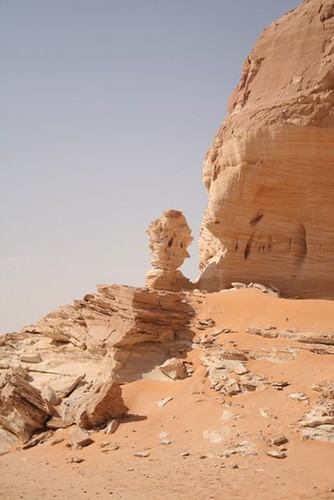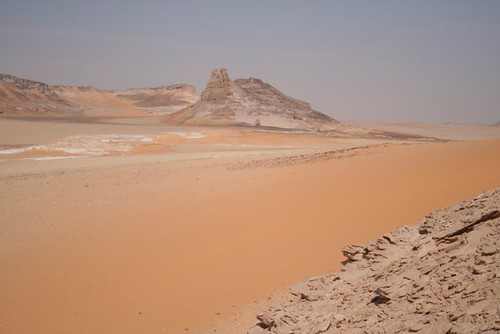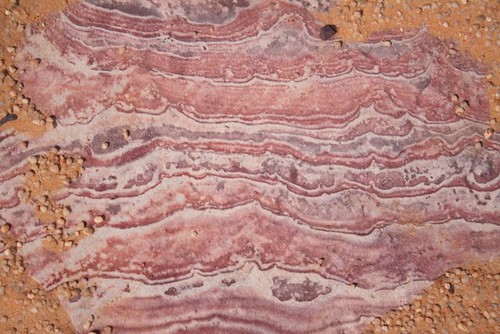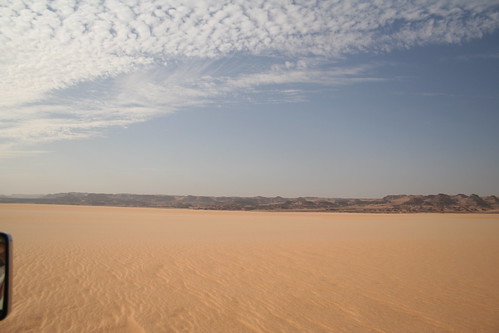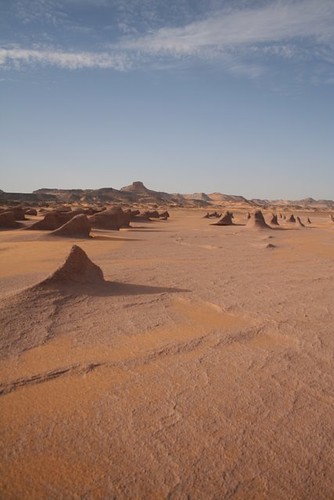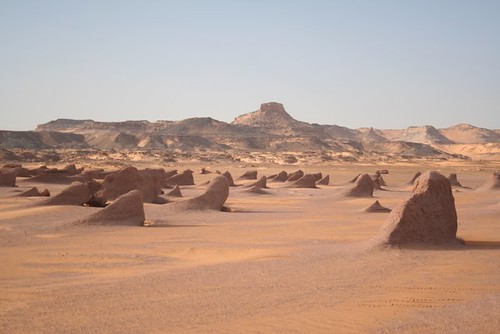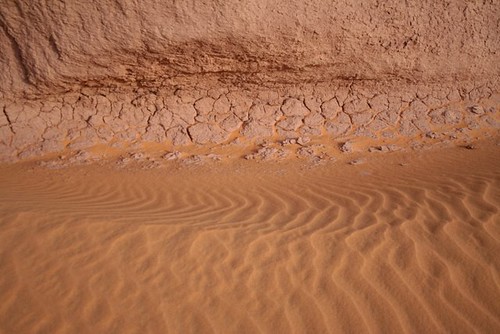Calming the fears
A bit of a distraction while I introduce a 'fringe' character.
The Captain, Mohamed is becoming a good friend. I had talked to him on the first morning at Dakhla as were leaving. I introduced myself and chatted for a few minutes. I talked to him occasionally at the stops and lunch breaks. When told about his fears by Mahmoud I laughed with the others - for those who love the desert worries about scorpions, snakes, lions and djinns seem very funny. He says no-one want him to be there. In a way it is true - no-one really wants a military escort. They are there to keep you to the rules in a place where we do not really want rules. They can be terrible - we had one on another trip who did nothing but arrange his hair in the wing mirrors and watch us all work.
Jean Daniel has been a bit surprised at the Captain's lack of interest in the things we have seen. When we stop he sits with the men and talks but does not come and look. For an erudite and ever-curious mind like Jean Daniel's this is impossible to understand. However I often feel that in Egypt kids are taught not to be curious. School is a room of sixty kids and one teacher - a curious child is just not welcome. Learning is all by rote, not by understanding. The Captain helps with the packing and moving of items from the cars - he is much better than any other officer we have taken to the desert.
I have found that he has been on one other desert trip - a short one to the Great Sand Sea. He is a lawyer by training and has finished his first bar exams with one step - a residency - to go before he is fully qualified. His father died leaving him to support the family so he worked in an Italian restaurant through his university years. He has younger brothers and sisters who he adores, and a very dependent mother. He is engaged and showed me the photo of his loved fiancee (who he has never had even ten minutes alone with). He is just a boy from Giza with an utterly typical life story, and he is Mr Cool in the city. He has D &G jeans, large sunglasses that wrap half his face, dimples, and a beautiful smile.
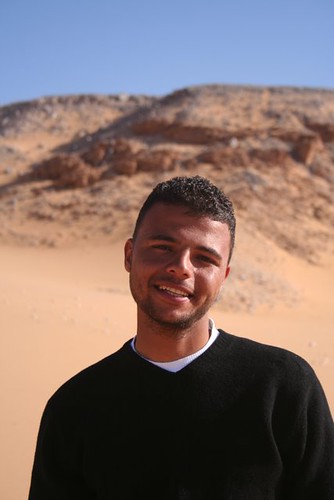
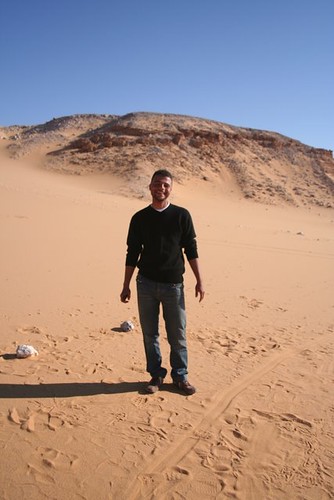
I could reassure him and laugh away the fears of snakes and scorpions, but I was worried about the fear of djinns. Djinns are not like ghosts which were once people, they are malevolent and evil.
I called him aside after my finds on the crater floor and gave him a lovely piece in shiny yellow stone, polished by melt and by wind and sand. It was obviously part of a worked blade. I told him its history, and how old it possibly was. I said it had been in the desert a long time and it had power as an object as it was worked by men. I told him it would protect him from djinns if he kept it close through the day. He said he woudl keep it in his bag at night.
He has slept well ever since, and is quietly helpful and grateful. I saw him transfer it from his bag to his pocket one morning so I know he is trusting it. He helps me now with everything - hovers nearby, helps if I am putting up my tent and generally looks after me.
No - it is not a belief that I have - but I knew that it might calm him down.
The Captain, Mohamed is becoming a good friend. I had talked to him on the first morning at Dakhla as were leaving. I introduced myself and chatted for a few minutes. I talked to him occasionally at the stops and lunch breaks. When told about his fears by Mahmoud I laughed with the others - for those who love the desert worries about scorpions, snakes, lions and djinns seem very funny. He says no-one want him to be there. In a way it is true - no-one really wants a military escort. They are there to keep you to the rules in a place where we do not really want rules. They can be terrible - we had one on another trip who did nothing but arrange his hair in the wing mirrors and watch us all work.
Jean Daniel has been a bit surprised at the Captain's lack of interest in the things we have seen. When we stop he sits with the men and talks but does not come and look. For an erudite and ever-curious mind like Jean Daniel's this is impossible to understand. However I often feel that in Egypt kids are taught not to be curious. School is a room of sixty kids and one teacher - a curious child is just not welcome. Learning is all by rote, not by understanding. The Captain helps with the packing and moving of items from the cars - he is much better than any other officer we have taken to the desert.
I have found that he has been on one other desert trip - a short one to the Great Sand Sea. He is a lawyer by training and has finished his first bar exams with one step - a residency - to go before he is fully qualified. His father died leaving him to support the family so he worked in an Italian restaurant through his university years. He has younger brothers and sisters who he adores, and a very dependent mother. He is engaged and showed me the photo of his loved fiancee (who he has never had even ten minutes alone with). He is just a boy from Giza with an utterly typical life story, and he is Mr Cool in the city. He has D &G jeans, large sunglasses that wrap half his face, dimples, and a beautiful smile.


I could reassure him and laugh away the fears of snakes and scorpions, but I was worried about the fear of djinns. Djinns are not like ghosts which were once people, they are malevolent and evil.
I called him aside after my finds on the crater floor and gave him a lovely piece in shiny yellow stone, polished by melt and by wind and sand. It was obviously part of a worked blade. I told him its history, and how old it possibly was. I said it had been in the desert a long time and it had power as an object as it was worked by men. I told him it would protect him from djinns if he kept it close through the day. He said he woudl keep it in his bag at night.
He has slept well ever since, and is quietly helpful and grateful. I saw him transfer it from his bag to his pocket one morning so I know he is trusting it. He helps me now with everything - hovers nearby, helps if I am putting up my tent and generally looks after me.
No - it is not a belief that I have - but I knew that it might calm him down.

